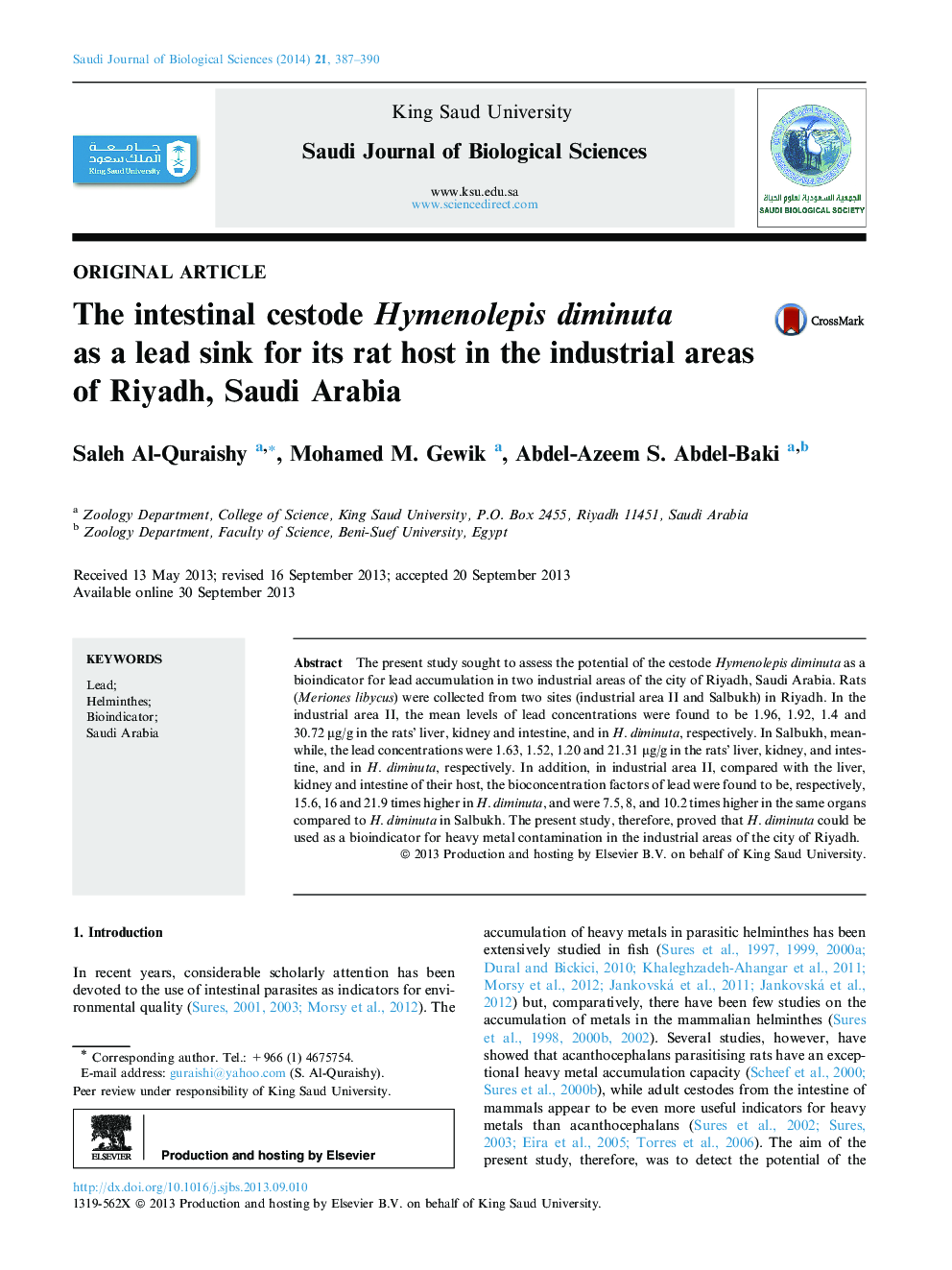| Article ID | Journal | Published Year | Pages | File Type |
|---|---|---|---|---|
| 4406472 | Saudi Journal of Biological Sciences | 2014 | 4 Pages |
The present study sought to assess the potential of the cestode Hymenolepis diminuta as a bioindicator for lead accumulation in two industrial areas of the city of Riyadh, Saudi Arabia. Rats (Meriones libycus) were collected from two sites (industrial area II and Salbukh) in Riyadh. In the industrial area II, the mean levels of lead concentrations were found to be 1.96, 1.92, 1.4 and 30.72 μg/g in the rats’ liver, kidney and intestine, and in H. diminuta, respectively. In Salbukh, meanwhile, the lead concentrations were 1.63, 1.52, 1.20 and 21.31 μg/g in the rats’ liver, kidney, and intestine, and in H. diminuta, respectively. In addition, in industrial area II, compared with the liver, kidney and intestine of their host, the bioconcentration factors of lead were found to be, respectively, 15.6, 16 and 21.9 times higher in H. diminuta, and were 7.5, 8, and 10.2 times higher in the same organs compared to H. diminuta in Salbukh. The present study, therefore, proved that H. diminuta could be used as a bioindicator for heavy metal contamination in the industrial areas of the city of Riyadh.
